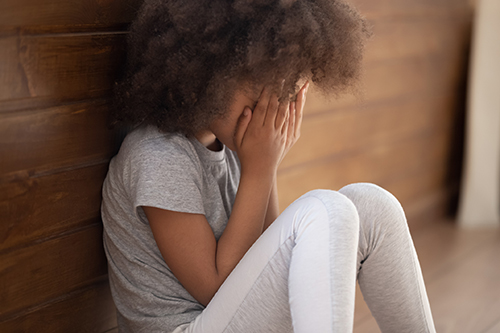Grieving a School Age Child (6-12 Years)
 Understanding of Death
Understanding of Death
Most school age children have heard the words “death,” “dying,” and “dead.” But they may not fully understand the meaning. Children this age may believe a mix of correct and incorrect information about death. They may struggle to understand that “dead is forever” and that “everyone dies.”
How to Help a School Age Child
Support your child by being honest. Children need simple explanations about death. Avoid phrases such as “gone away,” “sleeping,” or “in a better place.” These sound gentler to adult ears. But they can confuse young children. Use the words “death,” “dying,” and “dead.” School age children need to hear these words. Give simple explanations of what they mean. “Dead means that her body does not work anymore. Her heart does not beat. She does not breathe.” When talking about burial or cremation, use simple language. Be clear about what happens to the person, and what happens to the body. Avoid saying “We will bury your sister.” Instead, say “We will bury your sister’s body.”
Your child may ask “What does a dead body feel like? What will happen to her body?” They may ask “Will he always be dead? When is he coming back?” They may ask “Are you going to die, too? What about me?” These are all normal questions. Let your child ask as many questions as they want. Promise to answer honestly. They may ask a question you are not ready for. That is okay! Tell them, “Thank you for sharing your question. I am not ready to answer that one right now.”
It is okay to be a little flexible in their schedule and routine. During the day they may be distracted with activities. But at bedtime, they may focus more on their grief. This may mean they need extra attention then. You may see some changes in behavior. Be patient. Offer meals and snacks at their regular times. Make sure they get plenty of sleep.
Grieving is a new experience for most children. Children may worry about how to “do it correctly.” They may copy what they see on television. They may copy the adults around them. Reassure your child that whatever they are feeling is okay. This includes playing! Play is healthy and healing. Play is a very important part of grieving. Playing helps children cope. They will have moments of sadness, anger, and other emotions. Between these moments, they will play. This is normal and healthy. Going to school can feel familiar and comforting. It is okay to send your child to school when they feel ready.
Signs of Poor Coping
You may see some changes in your child’s eating and sleeping. This is normal. If the changes last for more than a few days, call your child’s doctor. Poor coping may show up at school. Talk to your child’s teacher. They can provide extra support during the day. Many schools have counselors. Play therapy can also help grieving children.
Memory Making & Keepsakes
These are personal items that children can hold. They help children to feel closer to the person who died. Always keep safety in mind. Save fragile items for when the child is older.
- Photos – Make a small book with photos of their loved one.
- Special items – Children may enjoy holding something from their loved one. For example a pillow, toy, or other soft item.
- Arts and crafts made with their loved one’s fingerprints or lock of hair.
- Letters from a loved one – If there is time, a loved one can create messages for the future. For example “a letter for my brother’s graduation.” Or “a video for my daughter’s wedding.” These can be done as letters or drawings. Videos are good, too.
- Recordable story books – Some children’s books include a built in microphone. You can record a loved one reading the story. Play it for the child to hear their loved one’s voice. (Read the instructions carefully!)
Resources
- Lifetimes: The Beautiful Way to Explain Death to Children by Bryan Mellonie and Robert Ingpen
This book explains death in a child friendly way. It uses simple words and repetition. It helps families find the words to talk about death with their children. - The Scar by Charlotte Moundlic and Olivier Tallec
This book tells the story of a boy whose mother died. It uses humor and honesty. - The Saddest Time by Norma Simon
This book offers three short stories about the death of a loved one. Death and grieving are talked about as a normal part of life. - Everett Anderson’s Goodbye by Lucille Clifton and Ann Grifalconi
This book explores emotions children may feel after a person dies. - When Someone Very Special Dies: Children Can Learn to Cope with Grief by Marge Heegaard
Children can write and draw in this book. The activities help children express their emotions. - Healing Your Grieving Heart for Kids by Alan Wolfelt
This book offers lots of ideas and activities to support healthy grieving. - Sesame Street in Communities - Grief
- Center for Loss & Life Transition
- Dougy Center